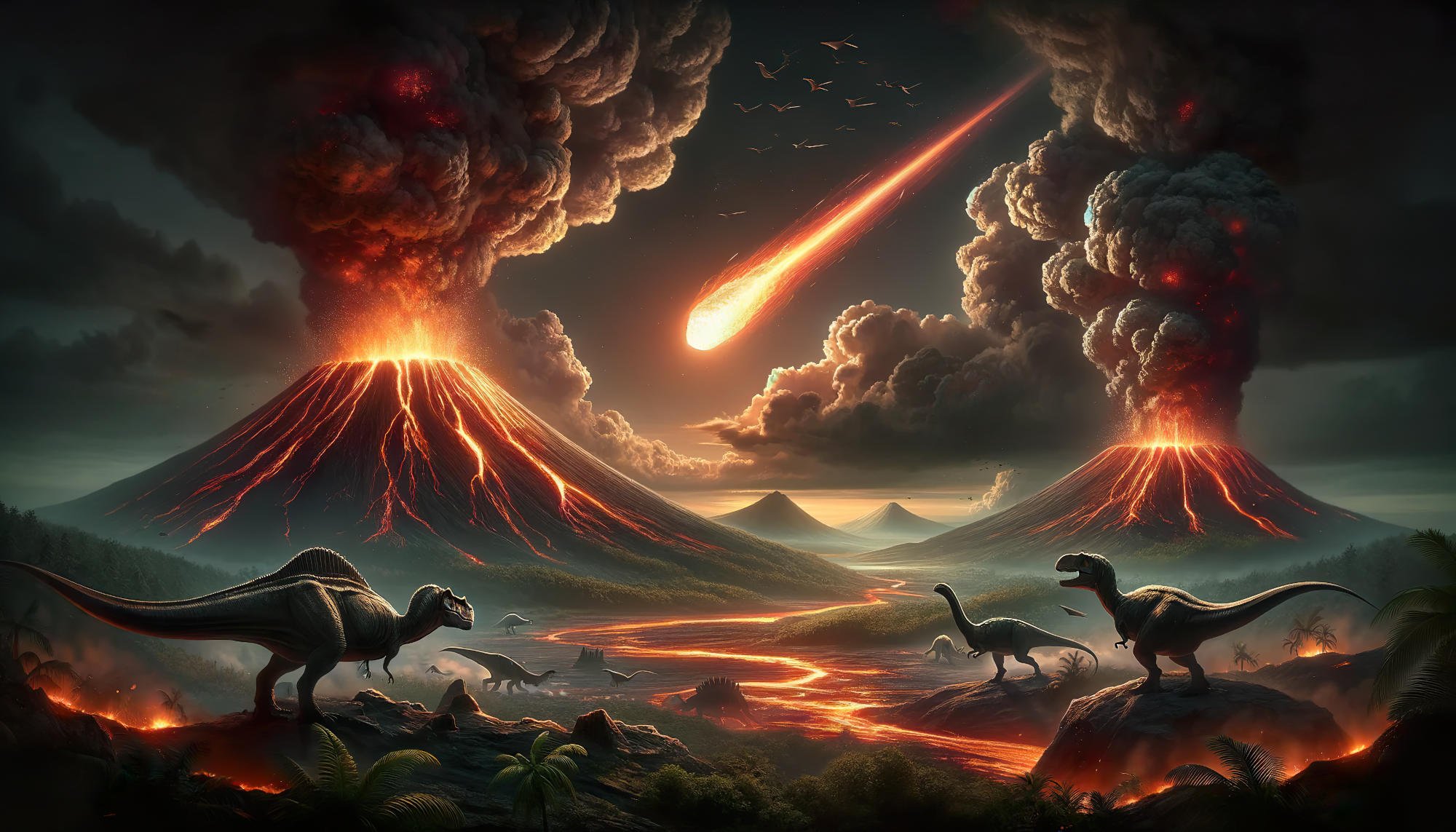Cutting-edge technology was used by Dartmouth scientists in an innovative computer model to suggest that volcanic activity, rather than an asteroid impact, was the primary cause of the mass extinction that ended the age of the dinosaurs. This groundbreaking shift in approach opens new avenues for investigating other geological events. The scientists removed themselves from the debate, letting computers decide by reverse-engineering the fossil record to identify the causes of a cataclysm.
The researchers report in the journal Science a new modeling method powered by interconnected processors. This groundbreaking innovation can work through reams of geological and climate data without human input. The team used nearly 130 processors to analyze the fossil record in reverse to pinpoint the events and conditions that led to the Cretaceous–Paleogene (K–Pg) extinction event.
According to Alex Cox, first author of the study and a graduate student in Dartmouth’s Department of Earth Sciences, “Part of our motivation was to evaluate this question without a predetermined hypothesis or bias. We adapted a carbon-cycle model to run the other way, using the effect to find the cause through statistics, giving it only the bare minimum of prior information as it worked toward a particular outcome. In the end, it doesn’t matter what we think or what we previously thought — the model shows us how we got to what we see in the geological record.”
The ground-breaking model suggests that volcanic activity, specifically the outpouring of climate-altering gases from India’s Deccan Traps, was likely the leading cause of the mass extinction. This finding is significant as it changes the narrative from the commonly held belief that an asteroid impact caused the extinction. The study uses extensive evidence to support this shift in perspective, demonstrating the model’s ability to work through the data without human bias.
This innovative approach reveals the remarkable potential of machine learning and interconnected processing to enhance scientific understanding. It opens a path for similar methods to be applied to evaluate historical events and potentially shed light on other complex systems within the Earth’s geological history. Cox and Keller’s method represents a significant step forward in computational modeling and its applications for understanding geological events. This research has the potential for valuable repercussions in future studies and scientific advancements.
Digital Object Identifier (DOI): 10.1126/science.adh3875.


